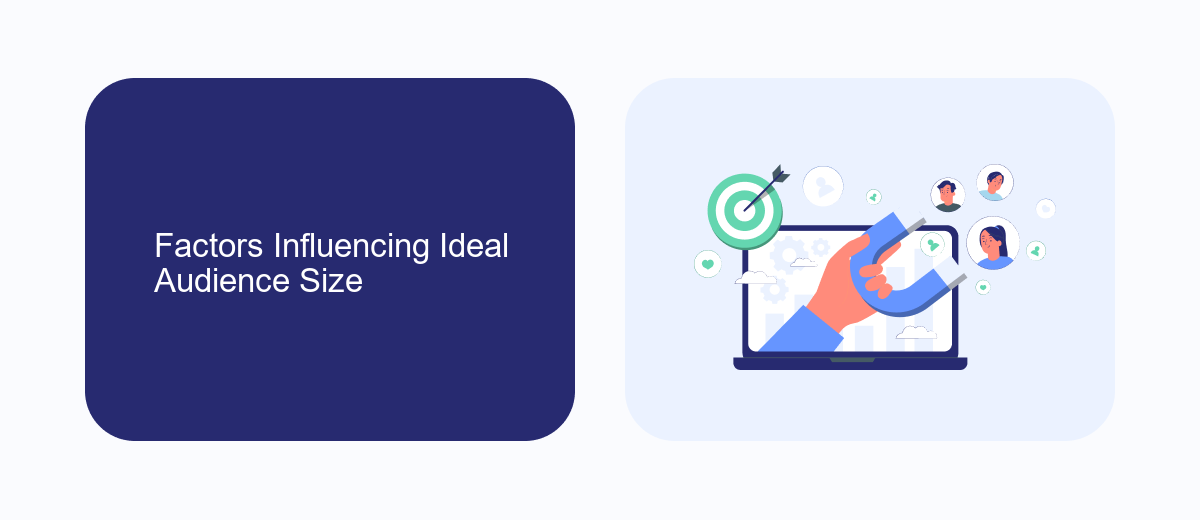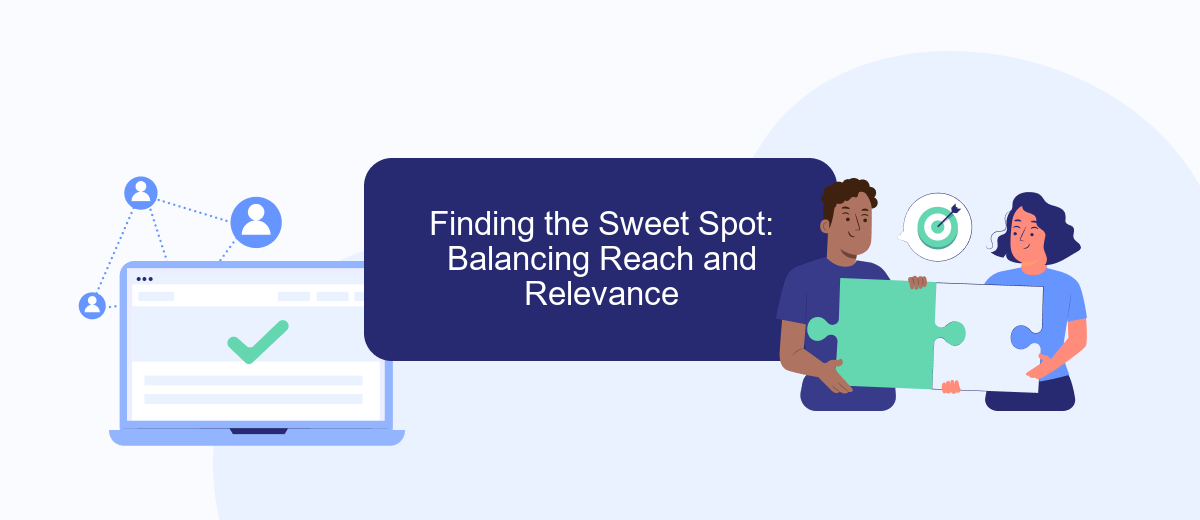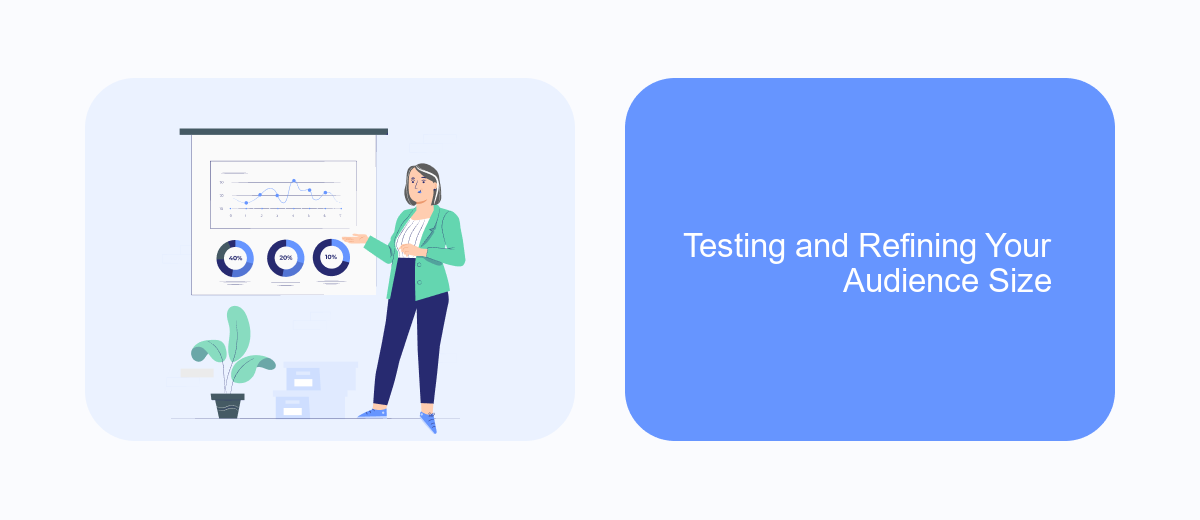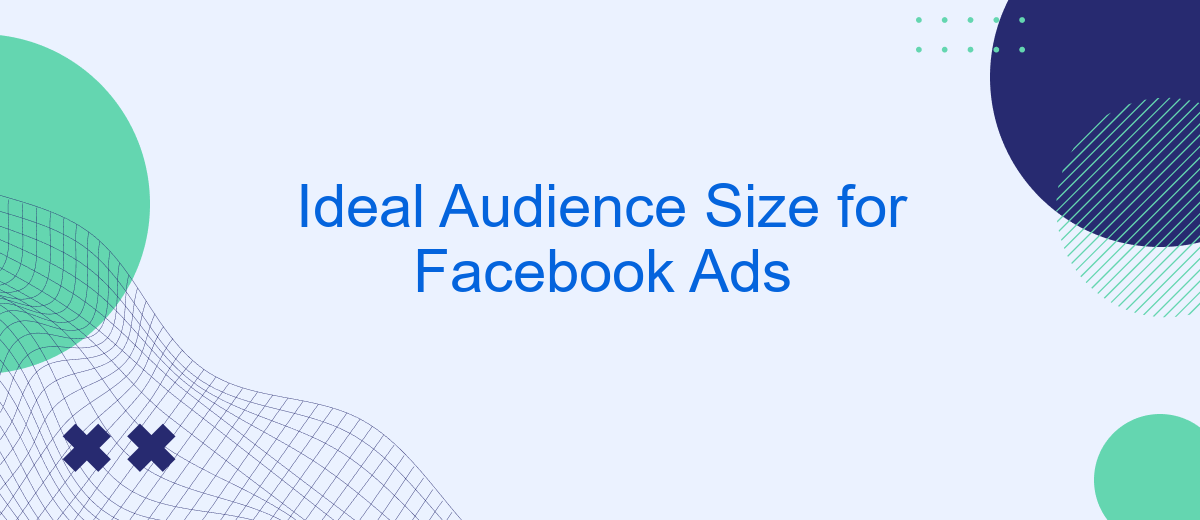Determining the ideal audience size for Facebook Ads is crucial for optimizing your advertising strategy. Striking the right balance between a broad and narrow audience can significantly impact your campaign's performance and budget efficiency. In this article, we explore how different audience sizes affect ad reach, engagement, and conversion rates, providing insights to help you tailor your approach for maximum effectiveness and return on investment.
Understanding Your Target Audience and Niche
Understanding your target audience and niche is crucial for crafting effective Facebook ad campaigns. By identifying the specific group of people who are most likely to be interested in your products or services, you can tailor your advertising strategies to meet their needs and preferences. This not only increases the relevance of your ads but also enhances engagement and conversion rates.
- Conduct market research to gather data on demographics, interests, and behaviors.
- Analyze your existing customer base to identify common characteristics and trends.
- Utilize Facebook's audience insights tool to refine your audience targeting.
- Define a clear niche by focusing on a specific segment of the market.
- Continuously test and adjust your targeting strategies based on performance metrics.
By investing time in understanding your target audience and niche, you can create more personalized and impactful ad content. This approach not only helps in reaching the right people but also ensures that your marketing efforts are cost-effective and yield a higher return on investment. Remember, a well-defined audience is the cornerstone of any successful advertising campaign.
Factors Influencing Ideal Audience Size

Determining the ideal audience size for Facebook ads is influenced by several factors, including the campaign's objective and budget. A smaller, more focused audience may be suitable for campaigns aiming at conversions or lead generation, as it allows for personalized targeting and higher engagement rates. Conversely, broader audiences might be more effective for brand awareness campaigns, where the goal is to reach as many people as possible. The budget also plays a crucial role; larger budgets can support wider audience sizes, while smaller budgets might necessitate a more targeted approach to ensure efficient spending.
Another significant factor is the use of integration tools like SaveMyLeads, which can streamline the process of audience segmentation by automating data collection and analysis. This allows marketers to create more refined audience segments based on real-time data, ensuring that ads are shown to the most relevant users. Additionally, the geographical location, demographics, and interests of the target audience should be considered to optimize ad performance and achieve the desired results. By carefully balancing these elements, businesses can effectively determine the ideal audience size for their Facebook ad campaigns.
Finding the Sweet Spot: Balancing Reach and Relevance

Finding the right balance between reach and relevance is crucial for optimizing your Facebook ad campaigns. A larger audience increases the potential for exposure, but it may dilute the relevance of your ads. Conversely, targeting a very specific audience can enhance relevance but limit your reach. Striking the right balance requires strategic planning and a deep understanding of your target market.
- Analyze your campaign goals: Determine whether your primary objective is brand awareness or conversions to guide your audience size.
- Utilize Facebook's audience insights: Leverage data to understand the demographics and interests of your potential customers.
- Test and refine: Start with a broader audience and gradually narrow it down based on performance metrics and engagement rates.
By carefully balancing reach and relevance, you can maximize the effectiveness of your Facebook ads. Regularly reviewing and adjusting your audience parameters will help you maintain this balance and ensure your ads resonate with the right people. Remember, the ideal audience size is not static; it evolves as your business and campaign goals change.
Testing and Refining Your Audience Size

Testing and refining your audience size is crucial for maximizing the effectiveness of your Facebook ads. By experimenting with different audience sizes, you can identify the sweet spot that balances reach and engagement, ensuring your ads resonate with the right people. The process involves a combination of strategic planning and continuous monitoring to optimize results.
Start by creating multiple ad sets with varying audience sizes. This allows you to compare performance metrics such as click-through rates, conversion rates, and cost per conversion. Identifying trends and patterns in these metrics will guide you in adjusting your audience size to achieve better outcomes.
- Analyze performance data regularly to track which audience sizes yield the best results.
- Adjust targeting parameters based on insights gained from your analysis.
- Consider testing different demographics, interests, and behaviors to refine your audience further.
- Utilize Facebook's A/B testing tools to systematically compare different audience sizes.
By continuously testing and refining your audience size, you ensure that your Facebook ads remain relevant and engaging. This dynamic approach not only improves ad performance but also maximizes your return on investment, helping you reach your marketing goals more effectively.


Analyzing Results and Optimizing for Performance
Analyzing the results of your Facebook ad campaigns is crucial to understanding what works and what doesn't. Start by examining key metrics such as click-through rates, conversion rates, and return on ad spend. Use Facebook's Ads Manager to break down the performance by demographics, placement, and time of day to identify patterns. This data-driven approach allows you to pinpoint which audience segments are responding best to your ads. Additionally, consider A/B testing different ad creatives and targeting options to refine your strategy further.
Once you've gathered insights from your analysis, it's time to optimize your campaigns for better performance. Adjust your targeting to focus on the most responsive audience segments and tweak your ad creatives based on what resonates with your audience. Tools like SaveMyLeads can streamline the process by automating lead data transfer, ensuring you have up-to-date information to make informed decisions. Continuously monitor your campaigns and make iterative changes to maintain optimal performance, keeping in mind that audience preferences can shift over time.
FAQ
What is the ideal audience size for Facebook Ads?
How can I determine the best audience size for my campaign?
Does a larger audience size mean better ad performance?
What factors should I consider when defining my audience size?
How can I automate and optimize my Facebook Ads targeting?
Don't waste another minute manually transferring leads from Facebook to other systems. SaveMyLeads is a simple and effective tool that will allow you to automate this process so that you don't have to spend time on the routine. Try SaveMyLeads features, make sure that this tool will relieve your employees and after 5 minutes of settings your business will start working faster.
